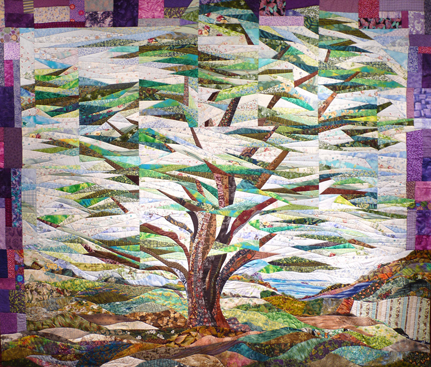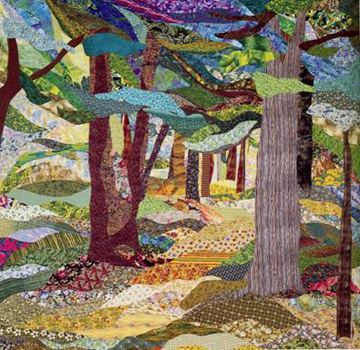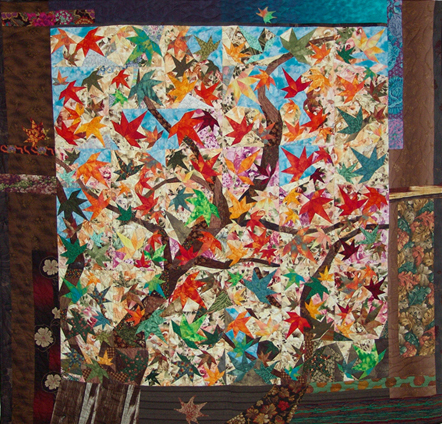Featured Artist - November 2010
Hsin-Chen Lin
[email protected] 
www.linhsinchen.idv.tw
When I was young, I loved to use my free time to see exquisite crafts during business travels. Once I went to Lincoln Center and saw a hand-stitched quilt made by women during Civil War period. I was moved by how it was respectfully treated, preserved, and displayed. Why was this worn-out work regarded as treasure in the U.S.? What is the cultural foundation? How did the story begin? What’s development of the resource of producing it? Born in a country with a rich culture of women’s needlework, I started to be interested in quilts and stories behind this kind of art form. From then on, nothing could interest me but “quilts.”
Learning to share with others is another important part of my self-taught plan. Devoting myself to teaching and researching has brought richness to my journey of exploration. I found my principle, “Focusing on teaching and no business relationship with students” worked well for me. Needles and threads are like teachers in my art life, leading me to absorb and mature. My thoughts and feelings are well-expressed in various forms through the narrative talents of quilts. I’ve gained wisdoms of life, happiness of sharing, and inexhaustible energy. I found solid training and restless questing can equip me with abilities to realize my ideals so I decided to teach quilting, share my experiences and form a society (TAQS) with companions to promote our common ideals.
Combining my young-days experiences of exhibitions visits with business integration ability, I made “building an integration platform for art quilts” as the dream I’m pursuing. Putting common good together to make bigger benefits and training myself to be an independent curator are goals that I’m striving for. These two goals are inseparable as the sunlight and shadow. This is the most important lesson that requires human and material resources, budgets, dream pursuing, and perfect and imperfect integration of timing and resources. Just like “piecing” in quilting, we connect small to big, few to many, details to details… I believe that what we’ll face in the future is not only the issue of personal performance of quilting techniques but also the issue of placing public good prior to personal good.
| The Tree of Life 300 × 252 cm, 2009 |
The Forest 310 × 360 cm, 2001 |
The Maple-colored Life 190 x 230 cm, 2005 |
 |
 |
 |
